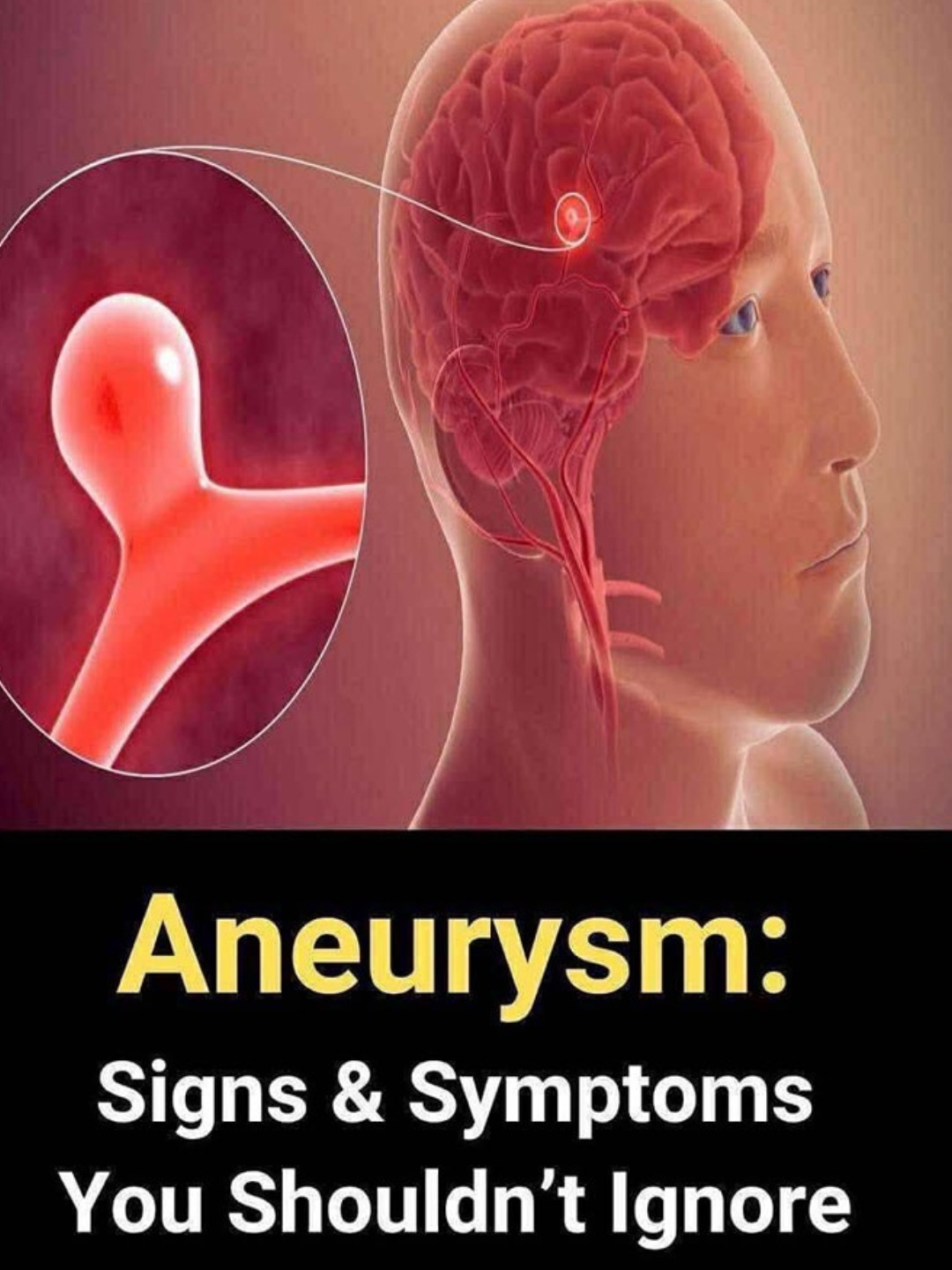
12 Signs That May Signal a Brain Aneurysm — Don’t Ignore Them (Early Recognition Could Save Your Life)
🤢 2. Nausea and Vomiting
Often follows a sudden, severe headache.
Caused by a rapid rise in intracranial pressure from bleeding.
Unlike typical stomach issues, this comes on suddenly with no prior illness.
👀 3. Blurred or Double Vision
An unruptured aneurysm pressing on the optic nerve or eye muscles can distort vision.
You might see double, have trouble focusing, or notice a sudden blind spot.
Can also cause drooping eyelid or dilated pupil.
🌀 4. Stiff Neck
A stiff, painful neck — especially when bending forward — can indicate blood irritating the meninges (brain lining).
Often described as feeling like severe muscle tension at the base of the skull.
🌫️ 5. Sensitivity to Light (Photophobia)
Bright lights feel painful or overwhelming.
Commonly occurs with headaches and nausea — a sign of brain irritation from bleeding.
😵 6. Dizziness or Loss of Balance
Sudden difficulty walking, coordination problems, or feeling off-balance.
May be mistaken for vertigo or inner ear issues — but when combined with other symptoms, it’s a red flag.
🗣️ 7. Speech Difficulties
Slurred speech, trouble finding words, or garbled talking.
Similar to stroke symptoms — because it is a type of stroke when ruptured.
🧠 8. Confusion or Mental Fog
Sudden confusion, disorientation, or inability to concentrate.
May seem “not like themselves” — a key clue loved ones often notice first.
⚡ 9. Seizures
A sudden seizure in someone with no history can be a sign of a ruptured aneurysm.
Caused by abnormal electrical activity due to bleeding in the brain.
😶 10. Loss of Consciousness
Fainting or passing out suddenly after a severe headache.
A medical emergency requiring immediate intervention.
🖐️ 11. Weakness or Numbness on One Side of the Body
Paralysis or tingling in the face, arm, or leg — usually on one side.
Mirrors stroke symptoms and signals brain dysfunction.